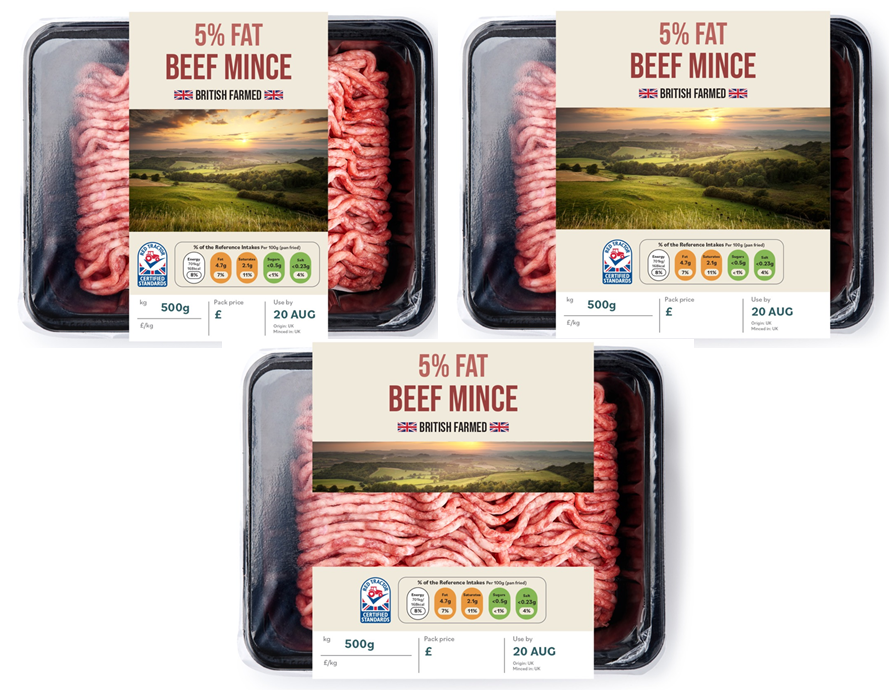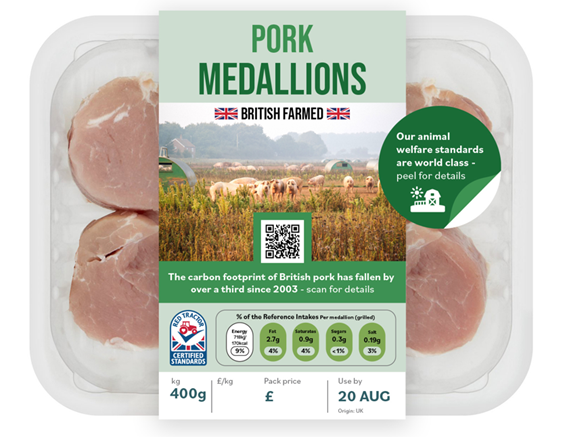- Home
- Optimising Meat Labelling - Label format
Optimising Meat Labelling - Label format
QR codes
To try to reduce clutter on labels, as well as including extra information some shoppers may be looking for, the research found that QR codes were a good way to do this, and were more popular than peel and stick stickers.
QR codes allow the label to remain ‘clean’ and top level and key information stays on the label so there’s no requirement to scan, or be au fait with the technology. However, it does enable a ‘deeper dive’ for those who are interested.
They can be used for a variety of messages, including linking to full recipes or recipe videos and giving more nutritional information. They can also give shoppers access to often ‘hidden’ information about animal welfare and sustainability, and respond to increased public interest in knowing where meat comes from and how animals are treated. Even if they never scan the QR codes, many shoppers found them reassuring and transparent.

Generally speaking, the meat industry is very opaque and this would help to offer some transparency and help me make informed choices. Shopper respondent

Although there are also a few watch outs with QR codes which shoppers highlighted. In reality, a lot of QR code scanning will happen at home as not everyone has their phone with them in-store or has the time or desire to loiter in the aisle. Some shoppers were also concerned about supermarkets unreliable internet reception.

It is very unlikely I would scan the code for farm details as it would require me to walk around the supermarket with my phone out which is something I don’t tend to do. Shopper respondent

Label size
Being able to see the product and assess the product quality is essential for shoppers. Therefore labels which take up too much of the pack were no liked by shoppers and labels which obscure the product, makes them wonder about quality.
There were mixed views on having the label off to the side rather than centred, with some thinking it looked more premium and others saying it looked careless, but overall most are ambivalent – it’s more about the size of the label.
While many shoppers want to see as much of the product in the packet as they can, many felt the label split between the top and bottom was good as it showed more of the product. However, others disliked the design as they felt a full label looked neater and not ‘interrupted’.

I think I prefer the larger label in the previous image, it feels more full - that is to say this one feels more interrupted or like I'm missing some information in a way the previous one didn't. Shopper respondent


There is a greater connection between the label and the content, having the window. Shopper respondent


I think it shows confidence having a window that shows more of the meat. But for me personally it is unnecessary to have a window on the label if you can see the meat on both sides. I prefer the label without a window because it looks neater. Shopper respondent

Examples of different label styles tested

Stickers
While most found the stickers useful, many didn’t like when they obscured too much of the product. Peel and stick was not as well liked, as many people thought they would be unlikely to peel in-store as some would feel guilty about peeling it before they decided to buy it. Some also said they wouldn’t buy a pack where it was obvious someone else had already peeled the sticker. Therefore, the peel sticker isn’t something we would recommend.

The right size stickers could be a great place to have QR codes and a way to reduce clutter on the main label. Stickers could also give more flexibility around promoting messaging which may change through the year, while the rest of the packaging may not. For example, having QR codes which link to seasonal recipes could be a great opportunity for continuous, changing promotions.


Sign up to receive the latest information from AHDB.
While AHDB seeks to ensure that the information contained on this webpage is accurate at the time of publication, no warranty is given in respect of the information and data provided. You are responsible for how you use the information. To the maximum extent permitted by law, AHDB accepts no liability for loss, damage or injury howsoever caused or suffered (including that caused by negligence) directly or indirectly in relation to the information or data provided in this publication.
All intellectual property rights in the information and data on this webpage belong to or are licensed by AHDB. You are authorised to use such information for your internal business purposes only and you must not provide this information to any other third parties, including further publication of the information, or for commercial gain in any way whatsoever without the prior written permission of AHDB for each third party disclosure, publication or commercial arrangement. For more information, please see our Terms of Use and Privacy Notice or contact the Director of Corporate Affairs at info@ahdb.org.uk © Agriculture and Horticulture Development Board. All rights reserved.

